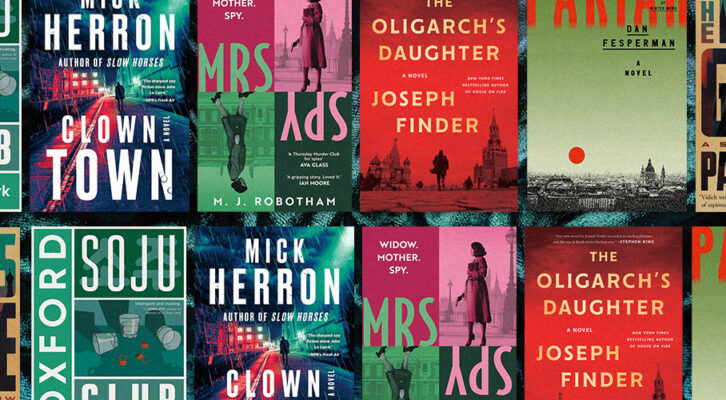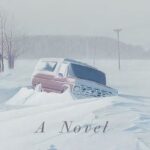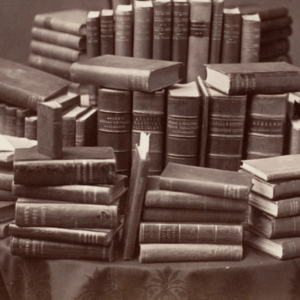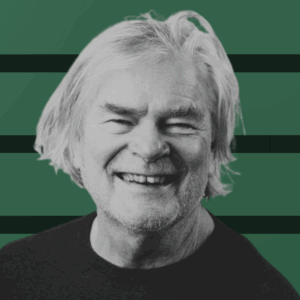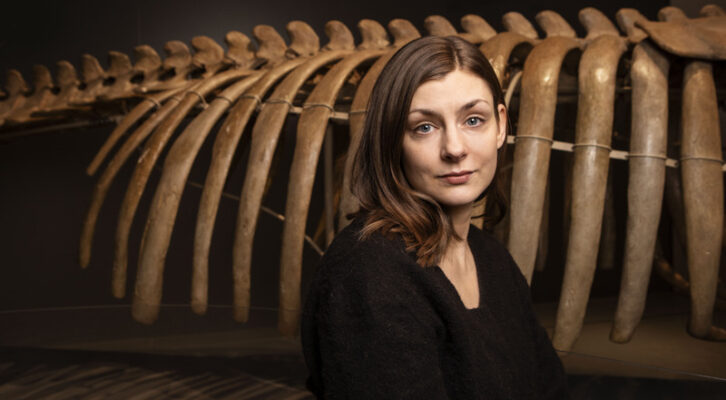
Iida Turpeinen on Exploring Our Relationship With the Natural World Through Fiction
Jane Ciabattari Talks to the Author of Beasts of the Sea
Iida Turpeinen’s Beasts of the Sea, translated from the Finnish by David Hackston, is a rare first novel, drawing readers into intimate connection with a little-known species, the Steller’s sea cow. The sea cow was first encountered in 1741; by 1768 it was extinct. Turpeinen’s centuries-spanning, revelatory narrative has drawn in readers in at least twenty-eight languages, some of whom have been moved to act on behalf of endangered creatures. She begins at the Natural History Museum in Helsinki, with a vision of the twenty-five-foot Hydrodamalis Gigas: “…even without its hide and blubber, this animal makes the other skeletons gathered in the room look like flimsy little toys…”
I asked Turpeinen, via email, at what point in her life she was drawn to extinct species. “In my childhood, my mother worked at a nature center on a small island just off the coast of Helsinki,” she explained. “There, I was able to observe both the life of the archipelago and the work of natural scientists up close. The Baltic Sea is one of the most polluted seas in the world, and through my mother’s work I came to understand, in a very concrete way, the impact we have on the environment around us.” She added, “My first experience of working life also took place on that island, during a school internship: I collected water samples for researchers, participated in bird counts, and collected injured birds to be put down.”
*
Jane Ciabattari: How did you decide to study the intersection of the natural sciences and literature for a Ph.D., and this novel?
Iida Turpeinen: When the time came to decide what I wanted to study, I found myself facing a difficult choice: literature or the natural sciences. In the end, the entrance exam book made the decision for me. That year, applicants to study literature were assigned The Master and Margarita by Mikhail Bulgakov, and only a few pages in, I realized the game was over. No book on geology could ever speak to me as profoundly as that novel did.
I was also struck by how its extinction seemed to mirror, with quiet precision, the failures of the Western relationship to the natural world.
When I eventually reached the point in my studies where I could choose my own research topic, I had the chance to bring my two passions together: I began to study the relationship between science and literature. At the same time, I realized that I wanted to explore this relationship not only through academic research, but also through fiction. Yet I wasn’t quite sure where to begin—the history of science and biodiversity loss are vast subjects that resist easy translation into narrative form, and I lacked a clear point of entry into those worlds.
JC: When did you begin writing Beasts of the Sea? What were the seeds?
IT: In 2016, during a visit to the Helsinki Natural History Museum, I found myself standing before a large, imposing skeleton. I read the small placard in front of it, which explained that this was the skeleton of the Steller’s sea cow—a species that had gone extinct just twenty-seven years after its discovery by science. It also noted that this was one of only three complete sea cow skeletons in existence. These facts sparked a multitude of questions: What had become of this animal? Why did it vanish so rapidly? And how had this extraordinarily rare skeleton come to rest in this small northern city?
Driven by curiosity, I headed straight to the National Library, borrowed every piece of material I could find related to the sea cow, and began to read. It didn’t take long before I realized that the story of this animal was the story I had been seeking.
JC: How did you arrive at the title?
IT: Ah, this was a book for which we struggled terribly to find a title! We turned over countless possibilities until, finally, the publishing editor noticed that one particular word recurred frequently in my manuscript: Elolliset. It is an old Finnish scientific term that refers to all living nature—as opposed to non-living nature, such as rocks or seas. To me, it felt like the perfect title: in Finnish, it immediately evokes natural science and carries a historical resonance, while its deeper meaning—that humans are but one among many living beings—seemed both beautiful and central to the book.
It soon became clear, however, that few other languages have an exact equivalent for the word, which caused translators no small amount of trouble. As a result, the book has appeared under very different titles in different languages.
In English, the book was titled Beasts of the Sea, after the name of Steller’s manuscript on the sea cow. I find the English title quite evocative: it gestures toward the history of science and the sea cow at the heart of the story, carries a whiff of maritime adventure, and at the same time quietly asks who, in the end, the true beasts of this tale might be.
JC: Beasts of the Sea spirals around the history of the Steller’s sea cow, a massive sea mammal related to the manatee, dugong and other sirenians. This sea cow is first encountered during Bering’s Great Northern Expedition in 1741, by young German naturalist Georg Steller. Steller’s role on the voyage is to document the flora, fauna, and precious rocks of the Kamchatka Peninsula. His encounter with the sociable, gentle sea cow enthralls him. It is larger than a whale, up to eleven tons, adapted to sub-arctic waters in the Northern Pacific, and feeds on shallow-water kelp. Steller is only able to preserve a twenty-five-foot skeleton. Within thirty years the creature has been hunted to extinction. What captivated you about the sea cow?
IT: The sea cow was a truly fascinating creature. It belongs to the same category as the great Ice Age giants—mammoths, woolly rhinoceroses, and cave bears—and it is astonishing to think that such an enormous mammal still lived among us as late as the eighteenth century.
It was also an exceptionally endearing animal: gentle and social, caring for its young together in groups, and, according to Steller, forming deep bonds between mated pairs. It is a creature almost impossible not to love—large, round, tender, and curious, radiating a gentle presence that invites immediate affection. I was also struck by how its extinction seemed to mirror, with quiet precision, the failures of the Western relationship to the natural world.
JC: “Myth and reality come together in the story of the sea cow, and one cannot write about them without writing about mermaids,” you write. How did you discover the first writings about the sea cow, compared to a mermaid by European sailors who spotted it in the water?
IT: While I’m fascinated by what science reveals about animals, I’m just as intrigued by the stories and meanings they’ve carried through cultural history. It’s striking that manatees and sea cows have been linked to mermaids almost everywhere they have been encountered, and that stories of siren creatures transforming into women appear in so many different traditions. In nearly every place these animals live, there are tales of mermaids coming to the aid of sailors in distress. I was moved to discover that, in a way, this is exactly what happened in the case of Steller’s sea cow: the animals quite literally saved Bering’s crew from starvation. Tragically, that same act of salvation also set in motion the events that would lead to the species’ own extinction.
JC: You portray in dramatic detail that 1741 expedition led by Captain Commander Vitus Bering. Their intense privations, partly caused by navigating off course, include scurvy, lack of drinking water, and near starvation. Bering dies on the island, now known as Bering Island, which is in the Bering Strait. Eating sea cows saves the lives of others on the ship, including Steller. How did you research this journey?
IT: Fortunately for the writer, this particular expedition is one from which a considerable amount of material has survived and which has been relatively well studied. I was therefore able to begin by familiarizing myself with the firsthand accounts left behind by the eighteenth-century explorers: Steller’s journals and the treatise he wrote during the voyage, the ship’s logbooks, and the reports written by members of the crew. From there, I undertook broader background research to better understand the expedition’s wider context—its intellectual climate, historical circumstances, and cultural setting—and read scholarly studies and biographies about the voyage and the people who took part in it.
JC: You cover three centuries in this novel. In 1741 Steller struggles to preserve remnants of this new species. In the mid-nineteenth century the governor to Alaska arranges for a nearly intact sea cow skeleton to be delivered to a Helsinki Museum, where it will be worked on by Finnish zoologist Alexander von Nordmann, with the help of a gifted female artist, Hilda Olson, who creates perfectly scaled drawings of the creature. In 1952, John Grönvall, a conservator at the Finnish Museum of Zoology, prepares the sea cow for display, piecing together bones with the help of Olson’s drawings. It’s an act of collaboration across time, during which the scientists shift their worldviews, from struggling to preserve remains of each new species to struggling to preserve species from humankind. What motivated your scope?
IT: Over the course of the writing process, I gradually realized that the book was becoming not only a story about the sea cow but also a story about how the very concept of extinction emerged, and how it transformed our understanding of our place in the world and our relationship to nature. To grasp such sweeping intellectual and historical shifts, I felt the narrative had to span several centuries—though for the writer, of course, that meant facing considerable challenges and undertaking a daunting amount of background research. Luckily, I’m the kind of person that loves to dig about in the archives.
JC: How were you able to track the journey of the sea cow specimen from its native island in Alaska to its current location in Helsinki?
IT: Perhaps surprisingly, the closer I came to the present day, the harder it became to find sources and information. Bering’s expedition has been studied extensively, but tracing the story and journey of a single skeleton proved to be a far more elusive task. It was not impossible, however: through old journals, letters, museum archives, biographies, and interviews with museum staff, I managed to move forward step by step.
At that point, the writing process began to resemble a kind of detective work, often leading me down completely unexpected paths. Along the way, I, for example, happened upon Finland’s first female scientific illustrator—a remarkable artist who had been entirely forgotten. To my great delight, Hilda Olson has since received the recognition she deserves, and her works were recently exhibited at both the Finnish National Gallery and the Natural History Museum. Through the book project, I also discovered something extraordinary in my own hometown: a secret Egg Museum whose existence was unknown not only to me but to most people. In the end, the book project itself proved to be a kind of voyage of exploration.
JC: Are there still unresolved questions you are pursuing about this creature?
Although remembering the extinct is essential, I try to direct my attention just as much to all that is still here for us to cherish.
IT: Oh, absolutely! The Steller’s sea cow is a creature about which we know remarkably little, as Steller was the only trained naturalist ever to record observations of the animal before it went extinct. Very little of it remains today—only a handful of complete skeletons—which means there is precious little to study.
At the moment, however, I have the great fortune of working as a writer in residence at the Natural History Museum of Helsinki, in the very place where one of these extremely rare skeletons rests. Even about this particular specimen, surprisingly little is known: for instance, we do not know its age—the bones could be ten thousand years old, or they might belong to one of the last individuals hunted to extinction in the eighteenth century. Together with the museum’s researchers, we recently decided to investigate its background more closely. The next step will be to radiocarbon-date the bones to determine when this individual lived. For the scientists, this will provide fascinating data in itself—and as a writer, I have promised to document and share the process with the broader public by writing an essay about the process of dating of the skeleton.
JC: You note in your acknowledgments the species declared extinct during the writing of this novel. Are you still tracking these declarations?
IT: In my novel, I tried to find a way to show that the sea cow was not an isolated case, but one link in the long chain of extinctions caused by humans. My first idea was to write an obituary for every species declared extinct during the seven years it took me to complete the book. The plan, however, soon proved impossible to carry out—there were around four hundred of them. I had thought I was following the discussion on biodiversity loss quite closely, and yet I had heard of only a handful of the animals and plants on that list. That means hundreds of unique beings vanished without many people even noticing.
We talk a great deal about biodiversity loss, and yet it still manages to unfold almost imperceptibly. And if we fail to perceive a catastrophe as it is happening, it becomes almost impossible to respond to it. But perhaps this is where literature and art can help: by bringing forth perspectives and experiences we might otherwise never encounter, by turning abstract phenomena such as extinction and climate change into experiences and stories we can live through.
Writing these closing acknowledgements was one of the most difficult texts I have ever had to write. And although remembering the extinct is essential, I try to direct my attention just as much to all that is still here for us to cherish.
JC: The book has now been published around the world, now in English in the U.S. and the U.K. How has your global reading public responded and shown interest in the sea cow?
IT: In the process of writing, the sea cow became for me a symbol of our strange relationship with nature—one in which it is at once an object of fascination and affection, and yet something we harm without fully grasping the scale or consequences of our actions. Strangely enough, this theme was brought into focus in an unexpected way after the book’s publication. After the novel was published, people began flocking to the Natural History Museum to see the book’s main character with their own eyes. Unfortunately, their enthusiasm sometimes went too far: visitors were so eager to get close to the skeleton that some even started touching it, despite its extreme fragility. Until then, the specimen had been displayed openly, but the museum was eventually forced to take protective measures and enclose it behind glass to protect it from overly zealous admirers.
One of the recurring themes in the novel is how even our love of nature can, paradoxically, contribute to its destruction. I still can’t decide whether it’s tragic or comic that my book itself ended up endangering the last remaining traces of the sea cow.
Now that translations are appearing and my readership is growing more international, it has been deeply moving to witness how profoundly the story of the sea cow has touched readers across the world. One of my favorite messages came from an Italian reader who wrote that, after finishing the book, she felt compelled to do something for marine life—and went on to train as a whale watcher. Surely this is the most beautiful kind of feedback a writer could hope for.
JC: What are you working on now/next?
IT: I am deep into the work on my next novel, which takes as its starting point one of the most bizarre scientific hoaxes of the nineteenth century. At its heart of this project lies a question that feels more urgent than ever: what truly makes knowledge trustworthy? The hoax itself revolved around animals, giving me the chance to return to one of my abiding fascinations—the intricate, often uneasy relationship between humans, science, and the animal world.
I have only just begun my background research, and though I cannot yet know where this journey will ultimately lead, I am certain it will be a fascinating one. Already, the archives have revealed such extraordinary figures and stories that I can scarcely believe my luck. At times I wonder whether I have simply been unusually fortunate in my choice of subjects—or whether the world itself is such a wondrous place that whatever one chooses to explore, one inevitably finds oneself surrounded by the most extraordinary stories.
__________________________________

Beasts of the Sea by Iida Turpeinen, translated by David Hackston, is available from Little Brown and Company, a division of Hachette Book Group.
Jane Ciabattari
Jane Ciabattari, author of the short story collection Stealing the Fire, is a former National Book Critics Circle president (and current NBCC vice president/events), and a member of the Writers Grotto. Her reviews, interviews and cultural criticism have appeared in NPR, BBC Culture, the New York Times Book Review, the Guardian, Bookforum, Paris Review, the Washington Post, Boston Globe, and the Los Angeles Times, among other publications.











